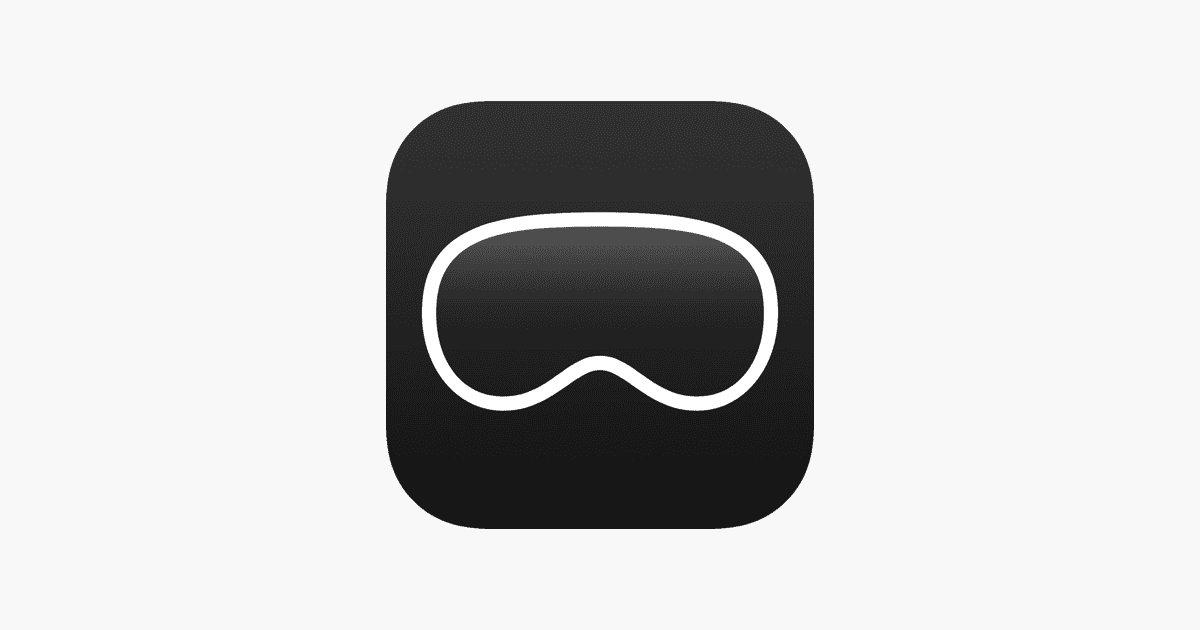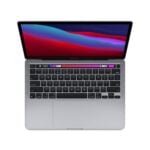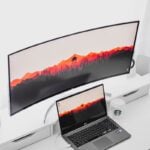Apple’s upcoming visionOS 26 isn’t just a software refresh—it’s going to be Apple’s most ambitious step yet toward unifying the spatial computing experience across its platforms. The new version leapfrogs from visionOS 2.4 straight to 26, aligning with the rest of Apple’s ecosystem (iOS 26, macOS 26, etc.) in a major rebranding move.
But this version number bump isn’t just cosmetic—what’s packed inside makes it clear Apple is turning up the heat on immersive computing.
Top New Features in visionOS 26
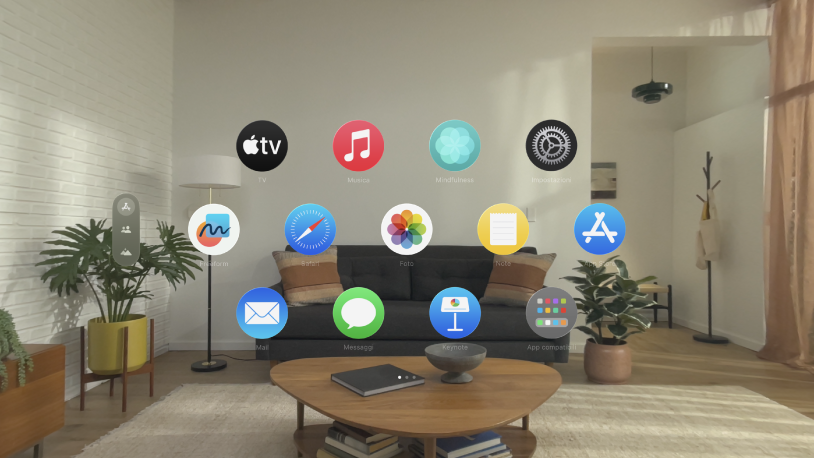
1. Year-Based Naming: visionOS 26
In a strategic shift, Apple is moving all platforms to a calendar-based versioning system. This move signals tighter integration across iOS, macOS, and visionOS, ensuring consistency for developers and users alike. Expect the Vision Pro to receive the same attention and annual cadence as the iPhone and Mac moving forward.
2. The “Solarium” Interface: UI Gets a Glow-Up
A design evolution is on the way. visionOS 26 introduces a refined visual style dubbed “Solarium”, featuring frosted transparency, rounded edge lighting, and a lighter, more naturalistic palette. Apple is leaning further into spatial UI metaphors—like floating panels and dynamic depth layering—making the interface feel more like a holographic workspace than a flat screen.
The new look isn’t isolated to visionOS either—it’s spreading across iOS, macOS, tvOS, and watchOS, signaling Apple’s broader push toward design unity powered by its new UI framework philosophy.
3. Eye-Scrolling: A Game-Changer for Accessibility and Efficiency
Eye-scrolling—long rumored and now seemingly confirmed—will allow users to scroll through content by simply looking up or down, without moving their hands. Combined with Vision Pro’s pinch gestures and spatial tracking, this could become one of the most intuitive and futuristic ways to interact with digital content. Apple is expected to offer an API so developers can integrate this feature into their apps.
4. Apple Intelligence and Siri 2.0
visionOS 26 taps into Apple’s broader Apple Intelligence initiative. Expect on-device, private AI that can:
- Predictively manage battery usage based on activity.
- Contextually assist with app suggestions, reminders, and environmental cues.
- Power a revamped Siri experience that integrates better with your surroundings, visual field, and task history.
Siri will become more than just a voice assistant—it’s aiming to become a context-aware digital concierge, available with a glance or gesture.
5. Unified Games App & Controller Expansion
A brand-new “Games” hub will consolidate Apple Arcade, Game Center, and third-party spatial titles. This could finally streamline the VR/AR gaming experience, helping visionOS grow as a gaming platform.
Even more exciting? Native support for PlayStation VR2, Xbox, and third-party motion-aware controllers is expected. That means Vision Pro could soon deliver console-quality gameplay in a standalone headset. Spatial games are about to get a lot more serious.
6. Live Recognition & Accessibility Upgrades
visionOS 26 expands its support for users with vision impairments:
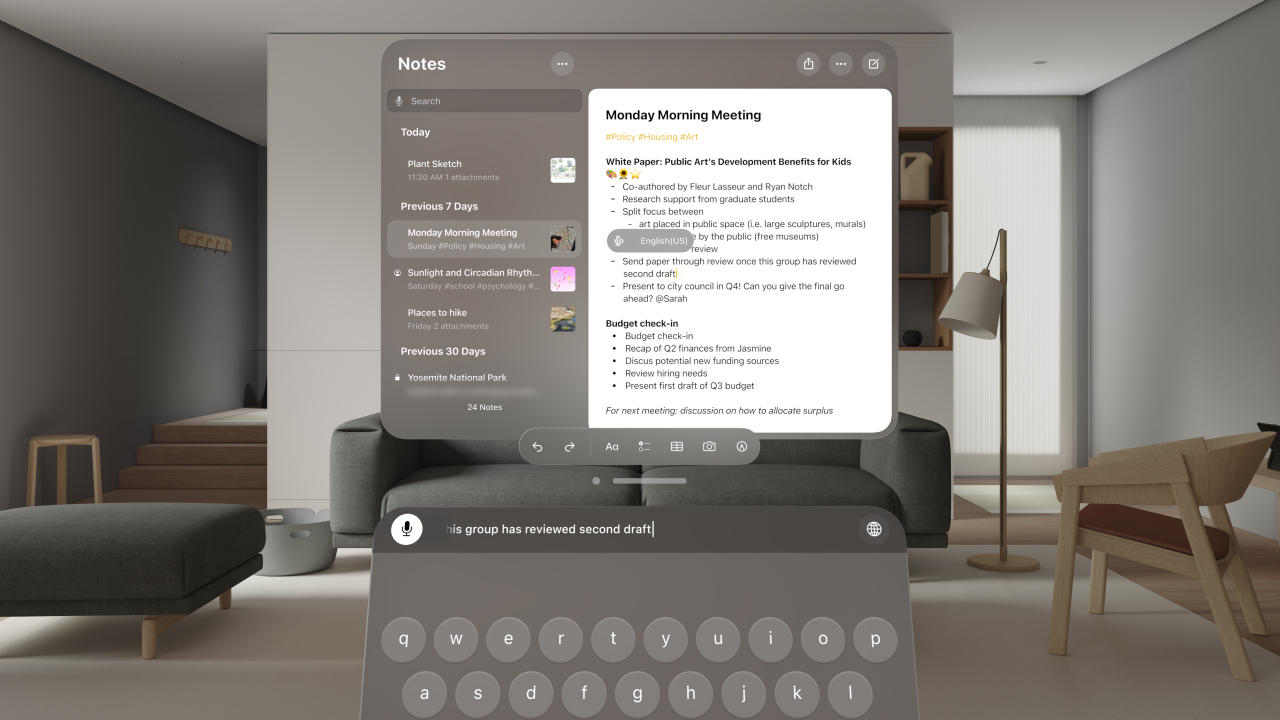
- Live Recognition for real-world objects and people, with real-time labeling overlays.
- Document reading, Zoom, and VoiceOver enhancements designed specifically for spatial environments.
- A magnified passthrough mode to assist with low-vision tasks in real time.
These changes underscore Apple’s commitment to making spatial computing accessible to everyone—not just tech enthusiasts.
Community Buzz & Insider Hype
Reddit and developer forums lit up after Bloomberg’s Mark Gurman revealed the version jump:
“Apple to announce visionOS 26 this year, skipping straight from 2.4 to 26 to match iOS and macOS.”
— r/VisionPro

And from early dev kit leaks:
“NEW: Eye-scrolling will be available for apps in visionOS 26. You’ll be able to control scroll direction just by looking.”
— r/AppleDev
There’s real excitement in the developer space, not just for new features, but for what this means long-term: Apple is now treating visionOS like a full-fledged OS platform, not just a novelty for early adopters.
What’s Next?

- WWDC 2025 Keynote: June 9 – Apple will likely unveil visionOS 26 live, alongside iOS 26 and macOS 26.
- Developer Beta: Launching post-keynote, offering devs first access to new APIs and UI elements.
- Public Release: Slated for mid-September 2025, in line with Apple’s annual release cycle.
Final Thoughts
visionOS 26 isn’t just about polish—it’s about positioning. Apple is laying the groundwork for a spatial computing ecosystem that rivals traditional computing. With smarter AI, deeper accessibility, groundbreaking input methods like eye-scrolling, and a unified gaming strategy, Vision Pro could soon move from niche luxury gadget to a genuine productivity and entertainment powerhouse.
Let me know if you want a breakdown of the new developer APIs, spatial game previews, or how visionOS 26 ties into Apple’s broader AI strategy.

Apple Vision Pro vs Meta Quest Pro
The Apple Vision Pro and Meta Quest Pro represent two major approaches to mixed reality headsets. Both aim to blend the virtual and real worlds, but they do so in very different ways. The Apple Vision Pro out-performs the Meta Quest Pro in almost every area, offering better visual clarity, more immersive mixed-reality experiences, and higher overall quality, though at a significantly higher price point.
When comparing these headsets, the difference becomes clear once you put them on. The Vision Pro displays are noticeably sharper, giving users a more detailed view whether working with apps or watching movies. The Quest Pro, while less advanced technically, offers solid performance for its much lower cost, making it more accessible to most consumers.
Users who need the best possible mixed reality experience might prefer the Vision Pro, while those looking for a balance between features and price will find the Quest Pro or even the newer Quest 3 more suitable. Both platforms continue to evolve with new software and capabilities, making this an exciting time for mixed reality technology.

How The Leading VR Headsets Stack Up
The Apple Vision Pro and Meta Quest Pro represent two distinct approaches to mixed reality, both aiming to bridge the gap between digital and physical worlds. While both offer impressive capabilities, they cater to different user priorities and come with significantly different price tags.
The Apple Vision Pro emphasizes a seamless integration of digital content into the user’s environment, focusing on “spatial computing” with incredibly high-resolution displays and intuitive eye and hand tracking controls that eliminate the need for physical controllers. Its premium build quality and powerful M2 chip make it a high-end device designed for productivity, entertainment, and a more immersive experience. However, this comes at a significantly higher price point and a slightly heavier design with an external battery pack.
The Meta Quest Pro, while also a premium device with mixed reality capabilities, positions itself more as a professional tool for collaboration, training, and lighter productivity tasks, alongside its gaming and entertainment offerings. It provides full-color passthrough and robust hand tracking, but it still includes physical controllers for more traditional VR interactions. The Quest Pro is considerably more affordable than the Vision Pro and offers a wider range of apps already available through the Meta ecosystem.
Here’s a breakdown of their key differences:
Apple Vision Pro vs. Meta Quest Pro
| Feature | Apple Vision Pro | Meta Quest Pro |
| Price | Starting at $3,499 | Around $999 (originally $1,499) |
| Release Date | February 2024 | October 2022 |
| Processor | Apple M2 and R1 chips | Qualcomm Snapdragon XR2+ Gen 1 |
| Display Type | Micro-OLED | QLED with local dimming |
| Resolution | 23 million pixels (approx. 11.5M per eye) | 1800 x 1920 pixels per eye |
| Refresh Rate | 90Hz, 96Hz, 100Hz | 72Hz, 90Hz |
| Control Scheme | Eye and hand tracking (no physical controllers) | Eye and hand tracking (with physical controllers) |
| Passthrough | High-fidelity color passthrough | Full-color passthrough |
| Operating System | visionOS | Android-based (Meta Quest platform) |
| Battery Life | Approx. 2-2.5 hours (external battery) | Approx. 1.5-3 hours (integrated battery) |
| Weight | Approx. 600-650g (headset) + 353g (battery) | Approx. 722g (with headstrap) |
| Multitasking | Excellent, multiple resizable apps | Limited (up to 3 apps, not resizable/movable) |
| Target Audience | Spatial computing, high-end entertainment, productivity, creative professionals | Business, collaboration, professional use, gaming |
In essence, the Apple Vision Pro offers a cutting-edge, premium “spatial computing” experience with unparalleled visual fidelity and intuitive controls, albeit at a very high cost. The Meta Quest Pro provides a strong, more affordable professional mixed reality solution with controllers, offering a balance of productivity and entertainment within Meta’s established ecosystem.
Key Takeaways
- Apple Vision Pro offers higher visual quality and better mixed reality but costs much more than Meta’s options.
- Both headsets work as standalone devices with no computer needed, but their ecosystems and app libraries differ greatly.
- The Quest Pro targets a broader audience with gaming focus, while the Vision Pro aims at productivity and premium entertainment users.
Evolution of VR and MR Headsets
Virtual reality and mixed reality devices have changed dramatically over time, moving from basic gaming tools to complex systems that blend digital and physical worlds. The journey shows how quickly technology can shift from science fiction to everyday reality.
Historical Developments
The roots of virtual reality stretch back to the 1960s with Ivan Sutherland’s “Sword of Damocles,” the first head-mounted display system. This bulky contraption hung from the ceiling but pioneered the concept of immersive visual experiences.
The 1990s brought VR to public attention with products like the Nintendo Virtual Boy and early arcade VR machines. These systems offered simple 3D worlds but were limited by technology constraints and often caused motion sickness.
A major breakthrough came in 2012 when Oculus launched its Kickstarter campaign. This sparked renewed interest in VR and led to Facebook (now Meta) buying the company for $2 billion in 2014.
The HTC Vive and first consumer Oculus Rift arrived in 2016, bringing room-scale VR to homes. These headsets required powerful computers and external sensors to work.
From Gaming to Productivity
Early VR headsets focused almost exclusively on gaming. The Meta Quest Pro changed this direction by adding color passthrough cameras for mixed reality experiences, expanding potential use cases beyond entertainment.
The Apple Vision Pro represents a significant shift toward productivity applications. With its high-resolution displays and powerful M2 processor, it targets professionals who need virtual workspaces rather than just gamers.
Both devices offer different approaches to mixed reality. The Meta Quest 3 focuses on affordability while maintaining decent mixed-reality features, while the Vision Pro prioritizes visual quality and seamless blending of virtual and real.
Today’s headsets serve diverse purposes:
- Remote collaboration
- Virtual design and prototyping
- Training simulations
- Medical applications
- Education
Design and Comfort
When comparing the Apple Vision Pro and Meta Quest Pro, their physical design and comfort features reveal significant differences in approach and execution. Both headsets aim for extended use comfort but achieve this through different design choices and materials.
Ergonomics and Wearability
The Apple Vision Pro uses a unique dual-band system with one band wrapping around the head and another going over the top. This design distributes weight more evenly than the Quest Pro. The Vision Pro weighs more but doesn’t feel as front-heavy during use.
The Quest Pro uses a halo-style headband that puts pressure on the forehead. It’s easier to put on and take off quickly. The Vision Pro includes a separate battery pack connected by a cable, while the Quest Pro houses its battery internally.
Eye tracking in the Vision Pro enables natural interface control, reducing the need for hand controllers. The Quest Pro does include eye tracking but relies more on its included controllers for interaction.
Materials and Build Quality
Apple’s Vision Pro features premium materials like aluminum, glass, and soft fabric cushioning. The face cushion uses a breathable material that creates a light-tight seal. The headset offers higher visual fidelity and more precise head tracking.
The Meta Quest Pro uses plastic for most external components with foam padding for the facial interface. It feels solid but less premium than the Vision Pro. Its build allows for peripheral vision around the edges, creating a less isolated experience.
Both headsets offer adjustment mechanisms for different head sizes. The Vision Pro includes custom light seals and optional prescription lens inserts. The Quest Pro provides more adjustment range for interpupillary distance.
Technological Specifications
The Apple Vision Pro and Meta Quest Pro offer distinct hardware capabilities that shape their performance. Both headsets feature advanced displays, powerful processors, and tracking systems, but with significant differences in quality and design approach.
Headset Display and Visuals
The Apple Vision Pro delivers remarkable visual quality with 22 million pixels across its display system. This micro-OLED technology creates sharp, vibrant images that make virtual objects look more realistic.
In contrast, the Meta Quest Pro offers 1,920 by 1,800 pixels per eye, which is good but not as crisp as the Vision Pro. The refresh rate also differs between devices.
The Vision Pro runs at 100 Hz, while the Quest Pro operates at 90 Hz. This small difference affects how smooth motion appears in games and videos.
Field of view is another key factor. While exact measurements vary by face shape, the Quest Pro generally offers a wider peripheral view than the Vision Pro, which has noticeable borders around its display area.
Both headsets support HDR content, but the Vision Pro’s higher resolution makes colors pop more vividly.
Processing Power and Performance
Apple equipped the Vision Pro with its powerful M2 chip, the same processor found in many Mac computers. This gives it strong performance for both mixed reality and standard computing tasks.
The Quest Pro uses the Snapdragon XR2 processor, which is designed specifically for VR tasks. While capable, it doesn’t match the raw computing power of Apple’s M2.
RAM impacts how many apps can run at once. The Quest Pro includes 12GB of RAM, while Apple hasn’t officially disclosed the Vision Pro’s RAM amount.
For storage, the Quest Pro comes with 256GB. The Vision Pro offers multiple storage options, though all are fixed and can’t be expanded later.
Battery life is similar between both devices, lasting about 2-3 hours of active use.
Tracking and Input Capabilities
The Vision Pro features advanced eye and hand tracking that lets users control the interface with just their eyes and finger movements. This creates a controller-free experience that feels natural but requires learning new gestures.
The Quest Pro comes with physical controllers that provide precise input and haptic feedback. These controllers offer familiarity for gaming and traditional VR applications.
Both headsets include multiple external cameras and sensors to track movement and map the surrounding environment. The Vision Pro has more sensors overall, allowing for higher precision when placing virtual objects in the real world.
Voice commands work on both devices, supplementing other input methods. The Quest Pro’s interface feels more game-oriented, while the Vision Pro aims for a computing experience similar to macOS.
For people who wear glasses, the Vision Pro offers custom prescription lens inserts, while the Quest Pro has more space to accommodate glasses within the headset.
Software and Ecosystem
The Apple Vision Pro and Meta Quest Pro offer distinctly different software experiences that reflect each company’s vision for mixed reality. Their operating systems, app libraries, and integration with existing platforms create unique user experiences that may appeal to different types of users.
Operating Systems and Compatibility
Apple’s Vision Pro runs on VisionOS, a new operating system built specifically for spatial computing. It extends Apple’s familiar design language into 3D space. The system works seamlessly with other Apple devices.
Users can mirror their Mac screen in Vision Pro or use iPhone apps directly in the headset. This tight Apple ecosystem integration is a major selling point.
The Meta Quest Pro runs on Android-based software. It works with both Android and iOS devices through the Meta Quest app.
The Quest Pro offers PC connectivity for more powerful experiences. Users can play Steam VR games by connecting to a computer, expanding its gaming capabilities significantly.
Content Library and Applications
Apple Vision Pro launches with access to the App Store, bringing many iOS and iPadOS apps into the headset. It also features Apple TV+ content viewable on a virtual screen that feels massive.
New spatial apps designed specifically for VisionOS take advantage of the headset’s unique capabilities. Apple emphasizes productivity with apps like Pages, Keynote, and Safari optimized for 3D workspaces.
Meta Quest Pro has a more established content library with thousands of VR titles. It excels in gaming and social experiences, reflecting Meta’s focus on the metaverse.
The Quest Pro offers Horizon Workrooms for virtual meetings and supports Microsoft Office apps. However, many apps still feel like VR experiences rather than true mixed reality.
Both platforms support key productivity apps like Slack and Zoom, but their eye tracking features work differently. Apple’s implementation feels more complete and integrated throughout the system.
Integration with Other Technologies
Both the Apple Vision Pro and Meta Quest Pro work with external devices, but in different ways. The way they connect with phones, computers, and media platforms can make a big difference in daily use.
Cross-Device Connectivity
The Apple Vision Pro shines with its seamless Apple ecosystem integration. Users can easily connect to their MacBook, iPhone, and Apple TV through built-in features like AirPlay and AirDrop. This makes sharing content between devices simple and quick.
For example, you can start watching a movie on your iPhone and continue on the Vision Pro with a swipe. The headset also lets you view and control your Mac’s screen in VR, creating a virtual workspace.
Meta Quest Pro works well with both Android and iOS devices through the Meta Quest app. However, it lacks the deep integration that Apple products have with each other.
The Quest Pro can stream content from your PC with Air Link, but the process isn’t as smooth as Apple’s system. Social media platforms like Instagram and YouTube are more easily accessible on the Quest Pro through its more open app store.
Expansion and Modularity
The Meta Quest Pro offers more options for physical expansion. It supports various accessories like enhanced controllers, carrying cases, and an external battery pack that extends play time. These add-ons make the headset more versatile for different uses.
Meta’s headset also works with many third-party accessories that aren’t made by Meta. This gives users more choices for customizing their experience.
The Apple Vision Pro has fewer physical expansion options but comes with a separate battery pack as standard. It has a more closed ecosystem for accessories, with most being designed by Apple itself.
Both devices support AR glasses integration in different ways. The Vision Pro has better mixed reality features built in, while the Quest Pro works with some external AR devices. For streaming services, both support Disney+ and some other platforms, though Netflix works better on the Quest Pro currently.
Multimedia and Entertainment
The Apple Vision Pro and Meta Quest Pro offer different approaches to entertainment experiences. Both headsets provide unique features for games, videos, and interactive content, but they cater to different user preferences and needs.
Gaming and Interactive Experiences
The Meta Quest Pro has a stronger focus on gaming than the Apple Vision Pro. It comes with dedicated controllers that provide precise tracking and haptic feedback. The Quest Pro’s library includes thousands of VR games and experiences through the Meta Quest Store.
Apple Vision Pro takes a different approach with hand and eye tracking for controller-free gaming. While its game library is smaller, it offers high visual fidelity experiences. Many games are ports from iOS, making them familiar to Apple users.
The Quest Pro has more active and immersive games that take advantage of full VR capabilities. Apple’s headset excels at casual games and interactive experiences that blend with your surroundings through mixed reality.
Battery life impacts gaming on both devices. The Quest Pro lasts 1-2 hours during gameplay while connected to the headset. The Vision Pro uses an external battery pack that needs to be attached.
Streaming and Content Consumption
Apple Vision Pro stands out for media consumption with its crystal-clear displays and amazing visual quality. It creates virtual screens that can be placed anywhere in your space and resized to theater dimensions.
The Vision Pro supports spatial videos and photos, allowing users to relive memories in 3D. It also features Apple Immersive Video, which provides professionally produced 180-degree 3D content with spatial audio for an enhanced viewing experience.
Meta Quest Pro offers decent media viewing but cannot match the Vision Pro’s display quality. The Quest Pro has a 1800 × 1920 resolution per eye, while the Vision Pro provides significantly higher pixel density with micro-OLED displays.
Both headsets support major streaming apps like Netflix and YouTube. The Vision Pro integrates seamlessly with Apple TV+ and other Apple services. The Quest Pro works well with Meta’s own platforms and offers a wider range of third-party apps.
Sound quality differs between the two. The Vision Pro features advanced spatial audio that creates an immersive soundstage. The Quest Pro’s audio is good but less sophisticated in creating directional sound.
User Accessibility and Inclusivity
Both the Apple Vision Pro and Meta Quest Pro offer different approaches to making virtual reality more accessible to a wider range of users. Each headset provides unique solutions for people with different needs and preferences.
Adaptive Technologies
The Apple Vision Pro supports optical inserts for users who wear glasses, eliminating the need to wear glasses inside the headset. This feature makes the device more comfortable for long-term use. The Vision Pro also uses advanced eye tracking technology that helps users with limited mobility interact with content.
Meta Quest Pro offers its own accessibility features. It includes physical controllers that provide tactile feedback, which helps users who may struggle with hand tracking alone. The Quest Pro weighs less than the Vision Pro, making it more comfortable for extended sessions.
Hand tracking works differently on both devices. The Vision Pro relies heavily on eye and hand gestures, while the Quest Pro offers both controller and hand tracking options. This flexibility gives users more ways to interact based on their abilities.
Customizable User Experiences
The Meta Quest Pro champions accessibility through its more affordable price point compared to Apple’s premium cost. This makes virtual reality technology available to more people across different economic backgrounds.
Both headsets allow users to adjust display brightness and contrast. These settings help people with visual sensitivities enjoy content without discomfort. Audio settings can also be customized for hearing needs.
The user interface designs differ significantly. Apple’s Vision Pro uses a familiar iOS-style interface that may feel more intuitive to iPhone users. The Meta Quest has a gaming-focused layout that appeals to those familiar with console interfaces.
Text size, color schemes, and menu layouts can be adjusted on both devices. These options help users with visual impairments or reading difficulties customize their experience.
Comparative Analysis
The Apple Vision Pro and Meta Quest Pro offer distinct approaches to mixed reality with significant differences in key areas. These disparities extend beyond mere specifications to fundamental design philosophies and intended uses.
Price to Performance
The Apple Vision Pro comes with a hefty price tag of $3,499, significantly more expensive than the Meta Quest Pro’s $999 price point (reduced from its original $1,499). This price difference raises important questions about value.
The Vision Pro offers superior visual fidelity with its micro-OLED displays delivering crisp text and detailed images. It also features more advanced eye and hand tracking technology that eliminates the need for controllers in most scenarios.
In contrast, the Quest Pro provides solid performance at a fraction of the cost. While its display doesn’t match the Vision Pro’s resolution, it still delivers acceptable visual quality for most applications.
For pure performance, the Vision Pro outperforms the Meta Quest in virtually every area, but the price difference makes the Quest Pro a more accessible option for many users.
Market Positioning and Target Demographics
Apple positions the Vision Pro as a premium “spatial computing” device aimed at professionals, content creators, and early adopters willing to pay for cutting-edge technology. Its emphasis on mixed reality rather than pure VR suggests a focus on integration with daily work.
Meta targets a broader audience with the Quest Pro, balancing performance with affordability. It appeals to business users, VR enthusiasts, and developers seeking a versatile headset without the extreme investment.
The Vision Pro seems designed for the Apple ecosystem user who values seamless integration with other Apple products and services. Its polished interface and attention to detail reflect Apple’s traditional approach.
The Quest Pro, meanwhile, feels more comfortable living in a truly virtual environment, catering to those who prioritize immersive VR experiences and gaming alongside productivity tools.
Pros and Cons of Each Device
Apple Vision Pro Pros:
- Superior display quality with higher visual fidelity
- More advanced eye and hand tracking
- Seamless mixed reality experience by default
- Premium build quality and comfort
- Multiple refresh rate options (90Hz, 96Hz, and 100Hz)
Apple Vision Pro Cons:
- Extremely high price point
- External battery pack limits mobility
- More limited app ecosystem (newer platform)
- Heavier weight can cause discomfort during extended use
Meta Quest Pro Pros:
- Much more affordable option
- Established VR app ecosystem
- Includes physical controllers for precise input
- Standalone device with no external battery needed
- More gaming and entertainment options
Meta Quest Pro Cons:
- Lower display resolution and visual quality
- Less refined mixed reality experiences
- Shorter battery life
- Build quality doesn’t match the premium feel of the Vision Pro
Future Outlook and Industry Impact
The VR/MR industry stands at a pivotal moment with Apple and Meta leading different approaches to immersive technology. Their strategies will shape how we interact with digital content and influence other tech companies in the coming years.
The Role of Tech Giants in Shaping the VR/MR Landscape
Apple and Meta represent two distinct visions for immersive computing. Meta, led by Mark Zuckerberg, focuses on affordable mass adoption through devices like the Quest 3. The company continues to push the metaverse concept despite mixed public reception.
Apple positions the Vision Pro as a premium spatial computing device rather than just VR. This approach has faced challenges, with recent reports suggesting Apple may be scaling back Vision Pro production to focus on more affordable options.
Meanwhile, Meta’s Reality Labs division keeps investing billions despite ongoing losses. Their strategy of creating accessible headsets and stylish wearables like Ray-Ban smart glasses is gaining traction with consumers.
Potential Developments and Technological Advancements
The next generation of VR/MR devices will likely feature improved displays, longer battery life, and more powerful chips. Apple’s r1 chip shows the importance of custom silicon for handling complex spatial computing tasks and real-time processing.
Augmented reality integration will become more seamless, blending virtual elements with physical spaces. Meta’s upcoming Quest 3S aims to bring these capabilities to more affordable price points, potentially expanding the market significantly.
Both companies face similar challenges:
- Reducing headset weight and size
- Improving battery technology
- Creating compelling content ecosystems
- Addressing privacy concerns
The race to develop AI assistants specifically for spatial environments will intensify, with each company leveraging their existing platforms. These assistants will help users navigate and interact with mixed reality spaces more naturally.
Frequently Asked Questions
Virtual reality headsets differ greatly in features, performance, and price. These devices offer varying experiences based on their technical specs, display quality, and ecosystem support.
How does the Apple Vision Pro’s resolution compare to that of the Meta Quest Pro?
The Apple Vision Pro has a much higher resolution than the Meta Quest Pro. It features more impressive visual fidelity with its micro-OLED displays.
Each eye on the Vision Pro gets its own 4K display, creating incredibly sharp images. This leads to text that’s easier to read and virtual environments that look more realistic.
The Meta Quest Pro, while still offering good visuals, doesn’t match the Vision Pro’s clarity and sharpness.
What features are unique to the Apple Vision Pro in contrast with the Meta Quest Pro and Meta Quest 3?
The Apple Vision Pro has several unique features not found on Meta’s headsets. One major difference is the external battery pack that powers the Vision Pro, while Meta’s devices have built-in batteries.
Apple’s EyeSight technology shows your eyes to others through an external screen when you’re wearing the headset. The Vision Pro also uses hand and eye tracking as its main control system, unlike Meta’s controller-based approach.
The Vision Pro runs on visionOS, Apple’s new operating system designed specifically for spatial computing tasks.
What are the price differences between the Apple Vision Pro, Meta Quest Pro, and Meta Quest 3?
The price gaps between these headsets are substantial. The Apple Vision Pro costs $3,499, making it the most expensive consumer VR headset on the market.
The Meta Quest Pro is priced at $999.99, significantly cheaper than Apple’s offering but still considered premium.
The Meta Quest 3 is the most affordable at $1,499, making it more accessible to average consumers.
Are there any significant advancements in the Apple Vision Pro’s performance over the Meta Quest 2?
The Apple Vision Pro brings many improvements over the older Meta Quest 2. It offers much higher resolution displays, more powerful processors, and better graphics performance.
The Vision Pro’s mixed reality capabilities far exceed the Quest 2’s passthrough features. Apple’s headset seamlessly blends virtual content with the real world in full color and high definition.
Eye and hand tracking in the Vision Pro is more advanced and precise compared to Meta’s older headset.
Will the Meta Quest Pro be phased out in favor of newer VR headsets?
The Meta Quest Pro will likely be replaced by newer models in Meta’s product lineup. Meta has already shifted focus to the Quest 3 as its main consumer device.
However, the Quest Pro may remain available for enterprise and business customers for some time. Meta typically supports its headsets with software updates for several years after release.
The company’s rapid development cycle suggests a Quest Pro successor could appear within the next 1-2 years.
Which headset offers a better value for the price point: Apple Vision Pro or Meta Quest Pro?
For most users, the Meta Quest Pro offers better value despite its limitations. At roughly one-third the price of the Vision Pro, it delivers solid mixed reality experiences and access to a large game library.
The Apple Vision Pro provides superior visual quality and mixed reality, but at $3,499, it’s hard to justify for casual users. Its high cost makes it more suitable for professionals or early adopters.
The Quest Pro strikes a better balance between performance and affordability for most VR enthusiasts.

